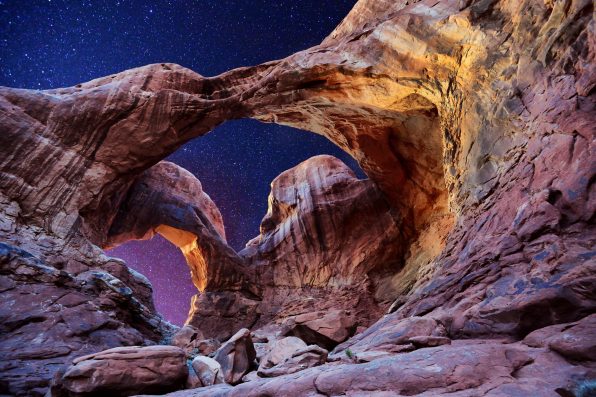At Glen Canyon National Recreation Area in southern Utah, an iconic landmark known as the Double Arch collapsed recently. Experts say that the demise of the impressive stone structure was bound to happen sooner than later.
The geological formation serves as a reminder that most arches do not remain standing forever. When an arch collapses, that means it has naturally reached the end of its lifespan.
So, the goal is not to prevent them from disintegrating altogether but to extend their lifespan.
“Our mission is not to freeze time and preserve these structures exactly as they are,” Karen Garthwait, the spokesperson for Arches and Canyonlands National Parks, said. “Our mission is to preserve the natural processes that create these structures, which, of course, is the same process that will eventually undo them as well.”
The Double Arch formed about 190 million years ago, according to the National Park Service. Within the past hundred years, human activity has sped up erosion.
Wind and weather conditions, as well as changes in water levels, have also contributed to the arch’s collapse.
The external appearance of an arch does not provide many clues as to its stability. The arches that seem most sturdy can have internal cracks, while the ones that look like they could fall apart at any second may actually hold up better against the elements.
The sandstone bedrock in southern Utah is strong enough to support large arches but soft enough to be shaped over time by water, wind, and gravity, per the Utah Geological Survey. The semi-arid climate in the region also helps form and maintain the majestic arches.
The National Park Service has taken action to limit human interference with the geological structures. Human activity over the span of decades can affect arches, although experts are unsure just how much of an impact it has.

Sign up for Chip Chick’s newsletter and get stories like this delivered to your inbox.


